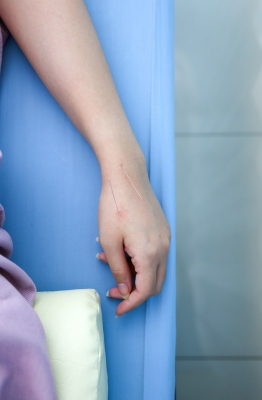 Hi everyone! It’s time for another Health and #WELLNESS WEDNESDAY! And, today we’re going to continue our discussion of Complementary and Alternative Medicine.
Hi everyone! It’s time for another Health and #WELLNESS WEDNESDAY! And, today we’re going to continue our discussion of Complementary and Alternative Medicine.
Otherwise known as CAM, this approach to treating illness is based primarily upon knowledge that stems from “eastern” traditions and philosophies. In this way, it is distinguished from “western” or “traditional” medicine — and from the treatments with which most of us are familiar. Yet, the exciting news is that more and more hospitals and medical facilities in many countries are beginning to incorporate CAM programs into their health care initiatives.
For the past few weeks we’ve been discussing different types of meditation — and the health benefits they can bring to our overall well being. So, this week we’re going to focus on the increasingly popular practice of acupuncture.
To begin, acupuncture is a technique of traditional Chinese medicine that has been used for centuries in the Far East. It’s based upon the theory that the body’s energy — also called chi or qi — flows along pathways in the body known as meridians. Practitioners believe that when the energy along these pathways is blocked or unbalanced, illness or pain will result. To relieve a blockage or restore balance, thin or hollow needles are inserted into the skin at specific points along these meridians.
Acupuncture, for example, is often used by cancer patients to relieve any pain or discomfort that might be caused by the standard treatments of chemotherapy and radiation. Researchers believe that the pain reduction attributed to acupuncture may result from biological mechanisms. In other words, the treatment may stimulate the hypothalamus or the pituitary gland. Or it may trigger changes in the body’s neurotransmitters, hormones or immune system.
Now, acupuncture is a slightly invasive procedure. But, it’s virtually painless and requires no anesthesia or sedative. I know. I’ve undergone many acupuncture sessions myself! And, quite honestly, I have never felt any discomfort whatsoever. The needles are so fine that at the very most — you might feel as if a tiny fly has gently landed on your skin. That’s all!
The technique, however, does require a certified acupuncturist who is licensed by the proper regulatory boards in the state or country in which the treatment is conducted. And, of course, in order to prevent the unintentional spread of illness or disease through cross contamination, the acupuncturist always uses sterilized or disposable needles throughout the procedure.
So, that’s the what of acupuncture — now let’s discuss the why.
And here are ten common conditions acupuncture can improve, decrease or reduce:
1) Nausea and vomiting resulting from medical treatments like chemotherapy;
2) Dental pain;
3) Stroke rehabilitation;
4) Menstrual cramps;
5) Low back pain;
6) Tennis elbow;
7) Headaches and migraines;
8) Osteoarthritis;
9) Carpal tunnel syndrome, and;
10) Asthma.
Not bad at all! Now, Chinese medical traditions such as acupuncture always incorporate a holistic approach to treatment. This means that on your initial visit your practitioner will ask many questions about your entire overall health and well being. As a result, your first session may last about an hour and a half. After that, each session typically will last 30-40 minutes. Additionally, more and more insurance companies are including CAM procedures in their medical coverage.
AND, the results begin immediately — although, depending on the condition being treated, it might take a few sessions for you to really feel a lasting difference.
That’s it! Acupuncture 101 in a nutshell! Next week we’ll continue with a discussion on yet another interesting CAM procedure that might be just right for you!
So, thanks for joining me everyone. Until then,
TAKE THE COURSE AND TAKE CHARGE!
Image courtesy of phaendin at FreeDigitalPhotos.net



Leave a Comment